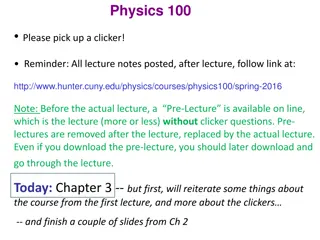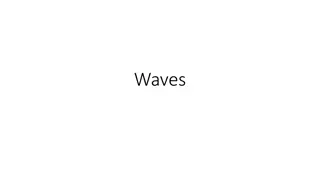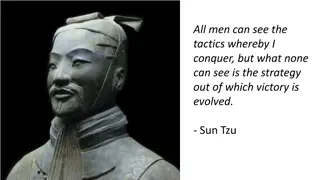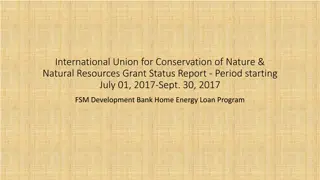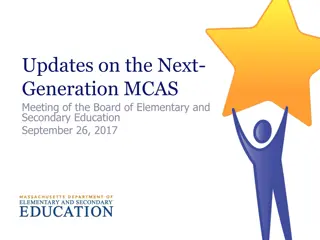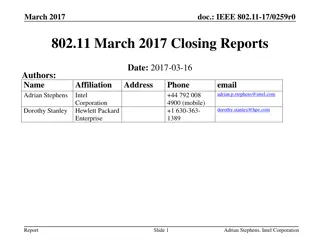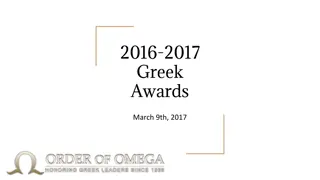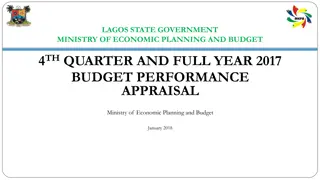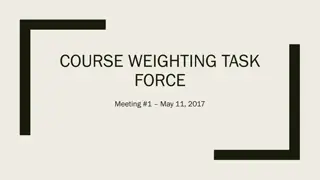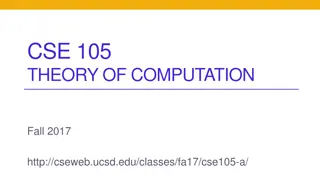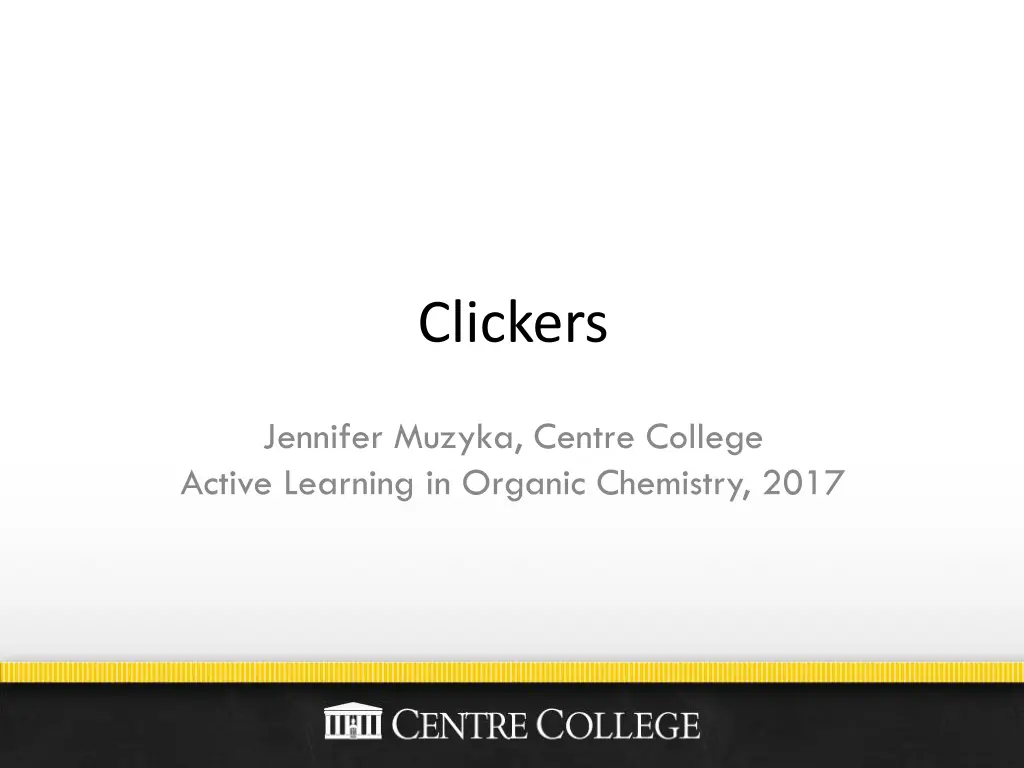
Enhancing Chemistry Education with Clickers and Active Learning Techniques
Explore the utilization of clickers in organic chemistry education, including benefits, barriers, question types, sources, peer instruction, and assessing-to-learn strategies. Dive into how clickers improve student engagement, participation, and success, aligning with educational frameworks and fostering interactive learning environments.
Download Presentation

Please find below an Image/Link to download the presentation.
The content on the website is provided AS IS for your information and personal use only. It may not be sold, licensed, or shared on other websites without obtaining consent from the author. If you encounter any issues during the download, it is possible that the publisher has removed the file from their server.
You are allowed to download the files provided on this website for personal or commercial use, subject to the condition that they are used lawfully. All files are the property of their respective owners.
The content on the website is provided AS IS for your information and personal use only. It may not be sold, licensed, or shared on other websites without obtaining consent from the author.
E N D
Presentation Transcript
Clickers Jennifer Muzyka, Centre College Active Learning in Organic Chemistry, 2017
What is your experience with clickers Haven t tried them but am interested Use them occasionally Use them regularly Haven t really considered them Opposed to their use
Literature about clicker usage Improves student success (Poulis, 1998) Maintain interest (Miller, 2003) Encourage participation (James, 2006) Facilitate active engagement (Boyle 2003) Encourage student reflection (Boyle 2003)
Educational frameworks Behaviorism, 1960 s and 70 s Constructivism, present Student collaboration Empowering students
What barriers prevent you from adopting clickers?
Question types Multiple choice Numerical Text Highlight structure Draw structure Add arrows
Sources of questions Textbook resources from publishers Suzanne Ruder s Clickers in Action: Active Learning in Organic Chemistry ChemEdX Qbank https://www.chemedx.org/JCEDLib/QBank/collection/ ConcepTests/) Instructor-written OrganicERs website Student generated Portland State University (http://web.pdx.edu/~wamserc/ConcepTests/)
Peer Instruction (Mazur) Short lecture Students answer clicker question individually Instructor views histogram but doesn t share with students Students discuss question with others who disagree Students answer clicker question again
Assessing-to-Learn (A2L) or Question- driven instruction Students discuss question in small groups before answering Instructor displays histogram of responses Instructor moderates whole class discussion Three to four cycles per 50 minute class period Each question has content goal, process goal, and metacognitive goal
Predict the major product. OEt OEt D. E. B + D A. B. C.
How many stereogenic centers? HO OH HO OH N N O NH N O
Which is the most stable conformer of cis-1- chloro-3-isopropylcyclohexane? Cl Cl Cl 2 3 1 Cl Cl Cl 5 6 4 Cl Cl Cl 7 8 9
What is the order of stability from most to least stable? A. 2-methyl-2-pentene B. (Z)-hex-2-ene C. 2,3-dimethylbut-2-ene D. Hex-1-ene E. (E)-hex-2-ene
How should the mechanism arrows be written? (Enter a sequence of numbers.) The 1stnumber is the base of a curved arrow. The second number is the head. If there is a second arrow, the 3rdnumber would be the base and the 4thnumber would be the head. 8 3 12 6 7 4 5 Br- + H3CH2C S CH2CH3 H3C Br H3CH2C S CH2CH3 CH3
How should the mechanism arrows be written? (Enter a sequence of numbers.) The 1stnumber is the base of a curved arrow. The second number is the head. If there is a second arrow, the 3rdnumber would be the base and the 4thnumber would be the head. 8 3 12 6 7 4 5 Br- + H3CH2C S CH2CH3 H3C Br H3CH2C S CH2CH3 CH3 36 78
Propose a multi-step synthesis to convert cyclohexene to ethoxycyclohexane. 4 Cl2 5 3 Mg, Et2O (Li, THF) SOCl2 2 Raney Ni, EtOH 1 D2O N 7 -OD 10 CH3CH2O-, CH3CH2OH, 9 NaNH2, NH3 8 HCl 6 H2O 13 CH3CH2Br 12 Na 14 PBr3 11 H2SO4, H2O
11 12 13 OR 11 9 13 O- OH12 Na 11 H2SO4, H2O O 13 CH3CH2Br CH2CH3
Synthesize 3-methylhex-3-ene from butan-2-ol and 1-bromopropane by entering the number for the correct reagents for the letters in the boxes. You will need to determine the identity of Compounds U, V, and W along the way. Use each reagent only once. 1. (1. LiAlH4, ether 2. H3O+) 2. Na2Cr2O7, H2SO4 3. Compound V 4. Compound W 5. Ph3P 6. BuLi, ether 7. Mg, ether 8. NaOEt, EtOH
Synthesize 3-methylhex-3-ene from butan-2-ol and 1-bromopropane by entering the number for the correct reagents for the letters in the boxes. You will need to determine the identity of Compounds U, V, and W along the way. Use each reagent only once. A=2; B=4; C=5; D=6 1. (1. LiAlH4, ether 2. H3O+) 2. Na2Cr2O7, H2SO4 3. Compound V 4. Compound W 5. Ph3P 6. BuLi, ether 7. Mg, ether 8. NaOEt, EtOH
Make a multiple choice question here by gathering student responses to the question and then writing them on the board in the classroom.
Word clouds Shea, Kevin, Beyond Clickers, Next Generation Classroom Response Systems for Organic Chemistry, J. Chem. Educ. 2016, 93, 971-974.
Other Options Colored cards/sheets of paper Plickers (http://plickers.com) Students draw & show answers iQlickers, Lee, A.W.M., Lecture Rule No. 1: Cell Phones ON, Please! A Low-Cost Personal Response System for Learning and Teaching, J. Chem. Educ. 2013, 90 (3), 388-389.
Resources Teaching with Classroom Responses Systems, Derek Bruff, Jossey-Bass, 2000 Clickers in Action: Active Learning in Organic Chemistry, Suzanne Ruder, Norton, 2013 Peer Instruction: Ten Years of Experience and Results, by Catherine H. Crouch and Eric Mazur, Am. J. Phys. 2001, 69, 970-977. Vince Maloney s questions on OrganicERs

